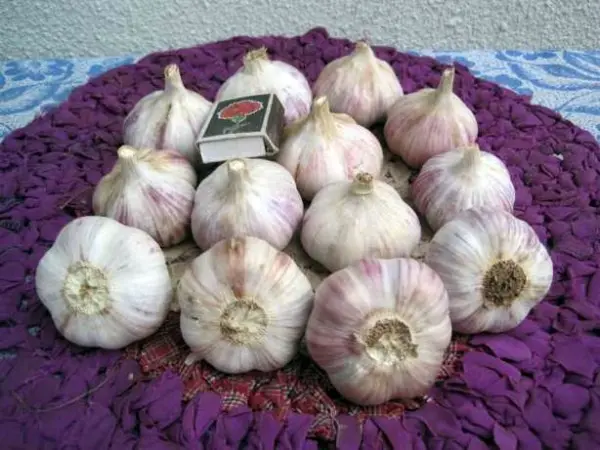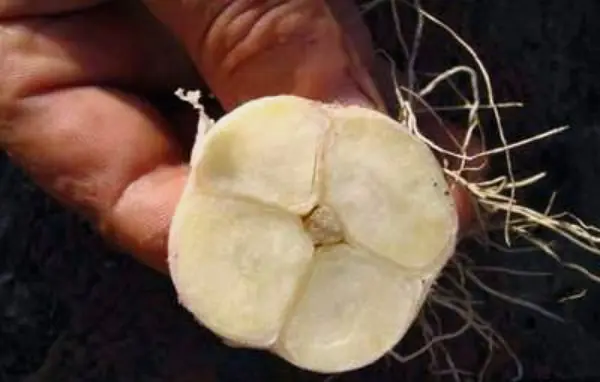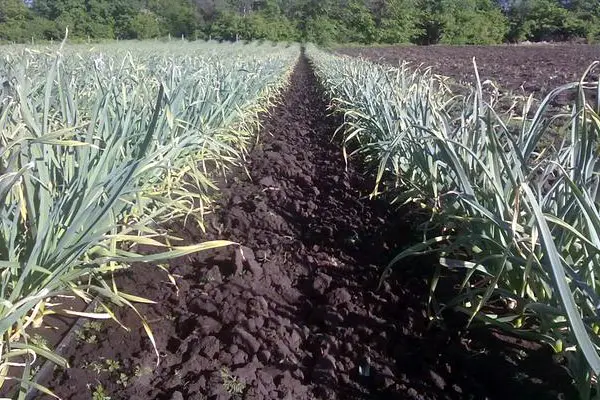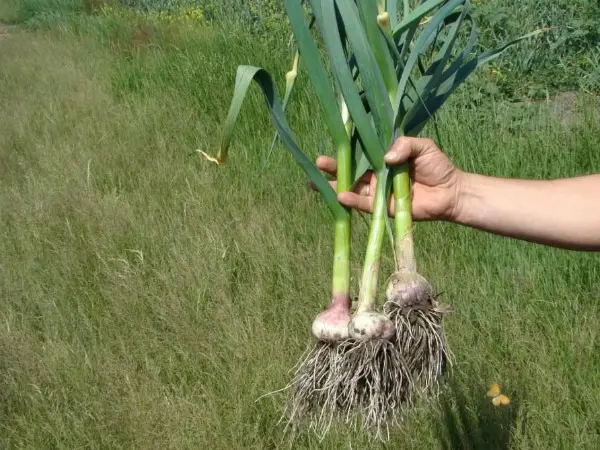Contents
A variety of varieties of garlic, on the one hand, allows you to choose a plant that is completely suitable for the conditions on the site, climate, taste needs, and on the other hand, it can confuse even the most experienced gardener. “Which variety is better? A friend in another area is blooming and smelling, will it be the same for me? – such doubts often torment summer residents. Fortunately, the advent of the Internet somewhat reduced the degree of misunderstanding and confusion, because you can read about any variety on specialized forums and websites. In this article we will talk about Lyubasha garlic.
Advantages of the variety
Of course, when choosing a variety of garlic, it is important to know about its key characteristics, advantages over other types, basic care and cultivation needs.
Variety “Lyubasha” refers to large, mid-season varieties of garlic, which releases an arrow. Being a hybrid plant, it is characterized by increased resistance to cold and drought, which makes it a welcome guest in beds in different regions. The ability for long-term storage is also at a high level – up to 10 months.

“Lyubasha” is distinguished by high immunity to diseases caused by fungal microflora, which can significantly save financial investments in plant treatment.
It is worth noting the taste of garlic – very spicy. The cloves of this variety can be used both for local culinary needs and for industrial cultivation and processing.
Productivity and characteristics of the variety
In height, Lyubasha bushes reach 1,5 meters, which allows not only growing quite spicy garlic, but also using the leaves as an ingredient for summer salads. The leaves are densely arranged, they are almost erect, reach a length of 45-50 centimeters, and a width of 2-2,5 centimeters, moderately covered with a wax coating. The husk is white with a pattern of purple veins.
Bulbs grow up to 120-130 grams in weight, consist of 4-7 cloves, each weighing 10-20 grams. One bulb contains vitamin C in the form of ascorbic acid, amino acids, proteins, selenium, essential oils, allicin.

Planting and care
Before planting, garlic cloves must be disinfected in a pink solution of potassium permanganate or a solution of copper sulfate. Thus, you strengthen the immunity of the plant, and also give it a head start in growth, because garlic is not grown for seedlings, but immediately planted in the ground. This variety can be planted and grown both manually and mechanically.
The soil should be fertilized before planting. The calculation of fertilizers is based on the characteristics of the soil in your area, but remember that garlic prefers loamy soil with neutral acidity. Basically, phosphorus and potassium should be used, you can add mullein or horse manure during the autumn digging of the site. In spring, liquid nitrogen fertilizers can be added to the soil – this will help the garlic to better form the bulb, leaves and develop the root system.

The variety is ready for planting from September 15, and for harvesting from the end of June.
It is imperative to observe crop rotation so as not to spoil the good starting data that this variety shows. Planting “Lyubasha” is best after legumes, legumes, green manure, gourds, as they saturate the soil with useful organic compounds that help garlic take root.
Air seeds, bulbs, are recommended to be planted in a mechanized way, after distributing them into “fractions”. The optimal distance between the bulbs is 10 centimeters, but between the rows a minimum of 40 centimeters of free space should be maintained so that the sprawling leaves do not obscure neighboring plantings.

Single teeth, which are obtained after the bulb growing season, can be left in the same place, but it is still better to dig up and transplant to a new one. The distance between them on the same bed should be increased to 15-20 centimeters to give more room for growth. However, the width of the free space between the beds should be the same – 40-60 centimeters.
Subsequent cultivations from cloves are carried out in an identical way. The only difference is that after 2-3 years the variety reaches the highest point of development, and then either falls into stasis or begins to regress. Therefore, it is imperative to renew the seed once every few years in order to consistently get a healthy crop.
Care “Lyubasha” needs the same as other varieties of garlic. For the winter, the beds must be mulched, and for cold, snowless winters, the mulch layer should be at least 3-4 centimeters. It is imperative to remove weeds from the garden so that insect pests, such as the onion fly, do not build their colonies on them. From about the first half of April, garlic needs regular watering, but make sure that moisture does not accumulate in the root zone.
Video “Harvest of garlic “Lyubasha”
Admire what a gorgeous harvest of Lyubasha garlic turned out in 2022.









